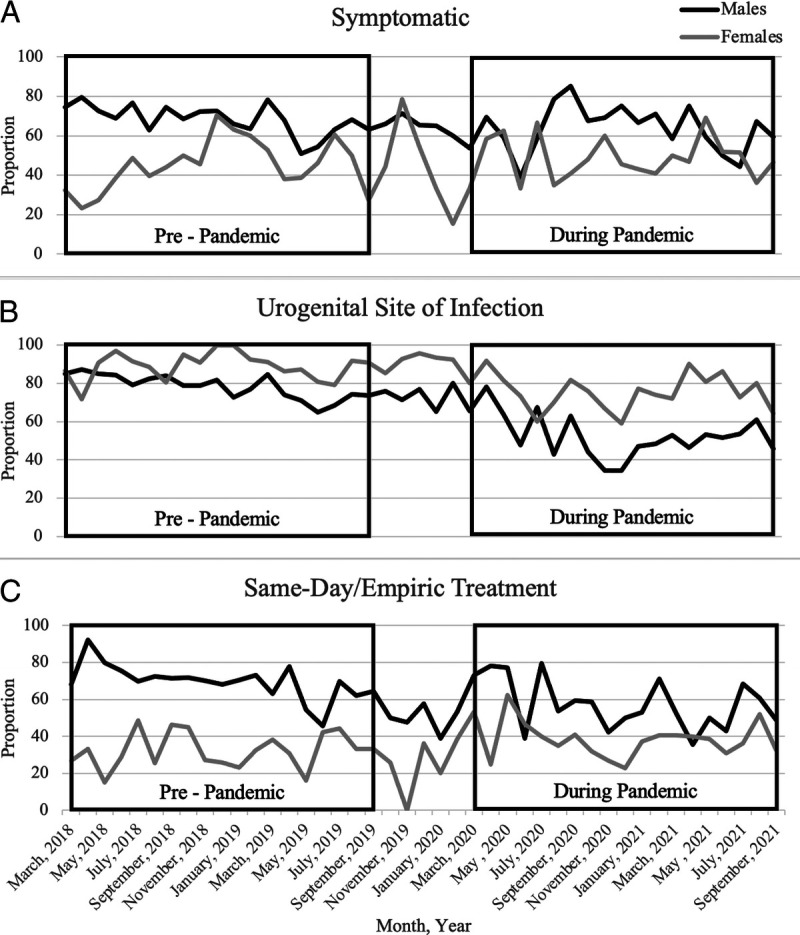Figure 2.

Proportion of reported gonorrhea diagnoses with symptoms and characteristics indicative of symptomatic infection by sex at birth during compared with pre–COVID-19 Pandemic, Baltimore City, Maryland. Panel A shows the proportion of cases with symptoms (urethritis, proctitis, epididymitis, PID, discharge, or other STI-related clinical findings reported by the diagnosing provider or patient self-reported discharge, dysuria, or other symptoms/pains believed to be caused by an STI). Panel B shows the proportion of cases whose had positive laboratory tests from urogenital (urine, urethral, vaginal, or cervical) specimens. Panel C shows the proportion of cases with documentation of receipt of CDC-recommended antimicrobial regimens for gonorrhea treatment or other microbial regimens commonly used to treat symptoms consistent with gonorrhea on or before the date a specimen was collected for laboratory testing. All proportions are calculated among cases with completed SSuN provider or patient surveys and stratified by sex with male cases represented in Black and female cases represented in gray. During pandemic: March 1, 2020 to September 30, 2021; prepandemic: March 1, 2018 to September 30, 2019.
